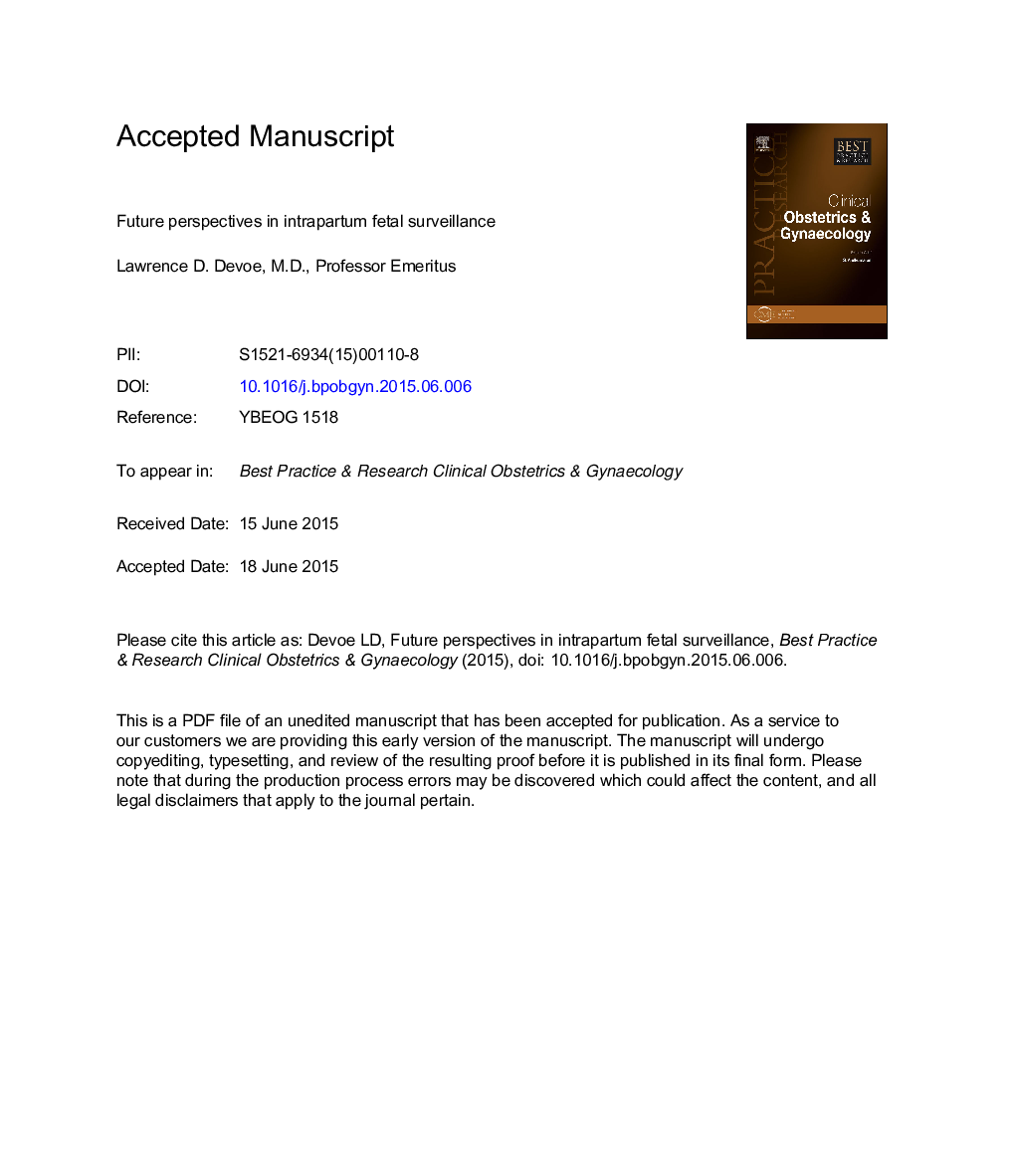| Article ID | Journal | Published Year | Pages | File Type |
|---|---|---|---|---|
| 6169235 | Best Practice & Research Clinical Obstetrics & Gynaecology | 2016 | 24 Pages |
Abstract
Electronic fetal monitoring (EFM) has aided intrapartum fetal surveillance for more than four decades. In spite of numerous trials comparing EFM with standard fetal heart rate (FHR) auscultation, it remains unclear that this modality has led to improved perinatal outcomes, especially lower rates of perinatal morbidity and mortality. A variety of ancillary methods have been developed to improve the accuracy of EFM for predicting fetal compromise. At present, a limited number of studies have shown that the addition of fetal electrocardiogram (ECG) analysis to visual interpretation of FHR patterns resulted in better fetal outcomes. However, the shortcomings of visual interpretation of FHR patterns persist. Although automated systems for FHR analysis have been developed, they have not been widely used or proven to enhance the value of intrapartum fetal surveillance. This article discusses future directions for novel intrapartum fetal surveillance systems that leverage the long experience gained from EFM to enhance the level of risk assessment and prognosis.
Related Topics
Health Sciences
Medicine and Dentistry
Obstetrics, Gynecology and Women's Health
Authors
Lawrence D. (Professor Emeritus),
